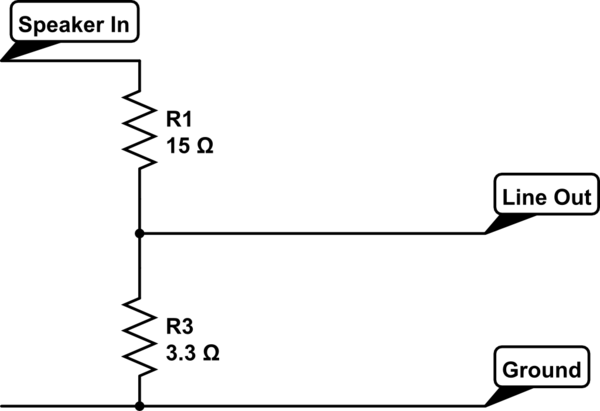I had a look at another Exchange question, and couldn't quite understand.
I have a set of cheap speakers, 8ohms each with a combined output of 6 watts.
If sqrt(6w/8Ω) = 0.866 v, and the post says line level is approximately 1 volt, what should my amperage be?
How can I calculate for an appropriate resistor?
I have about 10 150Ω resistors at home... will wiring them half and half between speakers attenuate the signal? How many do I need of each?
EDIT (CLARIFICATION):
I want to know how to calculate the resistance needed to reduce a powered signal (6w) to line level.

